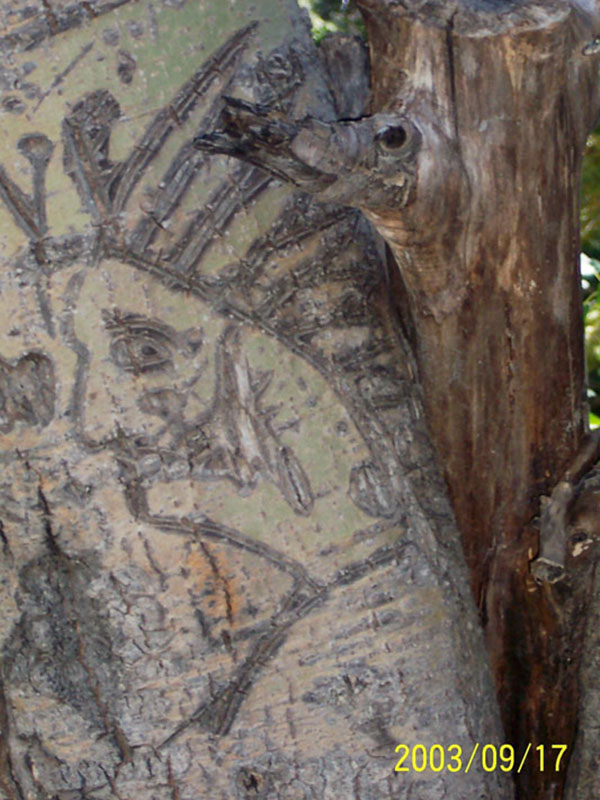Basque Carvings
The Basque are known as Europe’s first family since their language and culture is more ancient than any other in Europe. In 1849, Basques joined throngs of other young men from around the world seeking their fortune in the American west. Most of them were employed in the sheep business. By the early 1900s, "Basque" and "sheepherder" were synonymous. To pass the time on long lonely summer days in the high country, Basque sheepherders carved on aspen trees. These carvings are called arborglyphs, providing us information we could not find elsewhere. Today, there are very few aspen carvings dating before 1900 since aspen trees only live about 100 years.
Most of the carvings are names and dates, and many are in the Basque language, Euskara. Pictures that were carved are easy for us to understand. These personal details regarding the lives and thoughts of young Basque men shed light on roughly one hundred years of American West history.
While exploring aspen groves you may find examples of these carvings. At first glance, these carvings seem simple until you realize how human they really are. They have preserved a piece of the old west that is gone. Please respect these aspen trees, canvases of Basque artists. The Basque sheepherders skillfully carved without injury to the living tree. Irresponsible carving can cause injury that can then reduce the life span of the tree. If you are lucky enough to see some of these carvings, enjoy them, respect these historical finds, and leave no new carvings of your own.
It is illegal to carve on aspen trees on the national forests and grasslands!
Photo Gallery

Basque carving from 1935 from the eastern Sierra Nevada, Tahoe National Forest. Photo by L. Hanson.

Basque writing on aspen tree from the eastern Sierra Nevada, Tahoe National Forest. Photo by L. Hanson.

Botanical carving from the eastern Cascade Mountains, Lassen National Forest. Photo by T. Rickman.

Deer carving from aspen flat in the eastern Cascade Mountains, Lassen National Forest. Photo by T. Rickman.

Figure carved in an aspen tree from eastern Cascade Mountains, Lassen National Forest. Photo by T. Rickman.

House carving from the eastern Sierra Nevada, Tahoe National Forest. Photo by L. Hanson.

Carving of face from Howland Flat, western Sierra Nevada, Plumas National Forest. Photo by D. Clark.

Lady's face Basque carving from the eastern Sierra Nevada, Tahoe National Forest. Photo by L. Hanson.

Basque carving of Viva La France from the eastern Sierra Nevada, Tahoe National Forest. Photo by L. Hanson.

